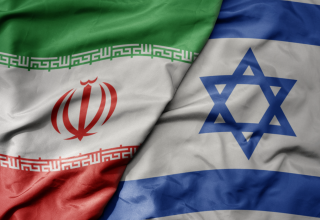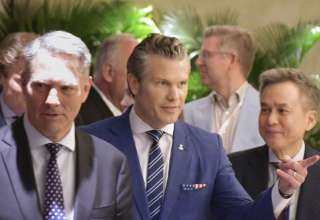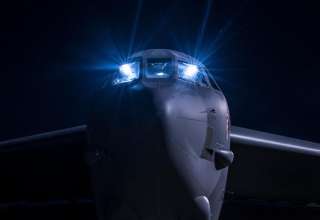A Commentary…
By Brian Boyd, October 2022
This is the second of a three part series that looks into the current geo-politics and what it means for Australia.
WHERE TO AUSTRALIA?
One Australian newspaper editorialised after the NATO summit: “Australia needs to find a way to square off the nuclear submarine deal with the region to avoid becoming a barrier to regional engagement and cooperation”. The Australian-US military relationship was described as a “tricky diplomatic challenge”, for the Australian government.
Pro-US war hawks within the Canberra security establishment, want the language to continue around the US remaining “the primary power” in the Indo-Pacific region and concede that US-China rivalry “risks military conflict”. Regardless, to them this has to remain “the pivotal message” under the Albanese government, as it was under the Morrison government, with “the bigger story” is to be about “hard-power strategic alignments and positioning,” on behalf of the US.
With such pressure, the core question for Australians remains – How does the government provide confidence that the Australian continent is secure into the future, as these global machinations unfold?
The Australian 2013 defence White Paper introduced the idea of Australia becoming a player in the “Indo-Pacific”. The 2016 defence White Paper kept such broad language, suggesting Australia’s defence procurements should be designed to operate in South-East Asia. Subsequently the 2020 defence strategic update was more explicit suggesting there be a “tight focus” on Australia’s “immediate region”, for defence planning.
This tightening of our ‘area of concern’ has never publicly been aired by our politicians. One commentator went as far as suggesting that Australia’s political leaders for years “have not been able to devote the time needed to understand our region” and have, more often than not, just blindly accepted the US’s view of ‘how the world works’.
In fact Australia has always been “an outlier” in the Indo-Pacific region. Foreign Minister Penny Wong has gone out of her way to try to correct this view, in her 2022 diplomatic visits across Australia’s northern neighbours.
This task will be a challenge, as many of these countries are “determinedly non-aligned” and have “refrained from choosing sides”, between the rival superpowers.
Recently (June) Indonesia’s Defence Minister Subianto said to a conference: “When we talk about managing geopolitical competition in this region, I must remind many of you that South-East Asia-in fact Asia-has been for many centuries the crossroads of imperialism, big power domination, exploitation and depredation”.
He went on to say that over the last 50 years the region has come to its “own way of resolving these challenges”, by pursuing a “peaceful environment…we understand the competing rivalry, between the established world power and the rising world power”.
The regions concern about the militarisation of the Indo-Pacific and the threat of war, should be acknowledged by Australia, not ignored.
Anyone who has travelled in countries like India, Sri Lanka, Philippines, Malaysia and Singapore in recent years would have seen via their major newspapers and media outlets, the constant public debate about the rising economic and military aspects of US-China rivalry. This is in contrast to the mainstream media in Australia, which does not comprehensively report on these matters.
Most of Australia’s media never contextualises both historically and currently, the basic causes and manifestations of great power rivalry. In particular there is no investigations into the specifics of the ‘threat’ narrative, the level of the threat and its material nature to Australia. Defence of the home territory is important but it must be real and not manipulated for another agenda.
ALTERNATIVE APPROACH?
When Foreign Minister Penny Wong was visiting Australia’s neighbours in early July a media article had a rare subheading: ‘As the PM talks to NATO, Penny Wong has toured the anxious middle nations of South-East Asia, keen to hedge their bets with the big powers’.
The media report went on to suggest that our Foreign Minister wanted “to redefine Australia’s regional engagement”.
“She spoke of the need to achieve a strategic equilibrium that enables countries to make their own choices regarding their partnerships and alignments”. It was suggested her speech provided an early indication of how the new government is “nuancing” it strategic approach to the Indo-Pacific in favour of “a more reasonably tailored articulation of Australia’s national interests”.
The media report went on to suggest: “Wong’s call for strategic equilibrium in that sense marks an interesting departure from the usual articulation of Australia’s objective of forging a balance of power.
“It creates space to recognise that middle powers, including Australia, will take different positions in respect of the great powers that can still find common ground on the role and purpose of the ASEAN-led regional architecture, and the importance of ensuring the sovereignty of smaller states within it”.
Is this really a divergence of views between Wong and Marles, or just a strategy to maintain US hegemony in the region? Time will tell.
A RENEWED DIRECTION?
Will this idea of a ‘strategic equilibrium’ and implied divergence of view, challenge Canberra’s historical ‘threat’ narrative, as defined by the US and its ‘agents of influence’ in Australia? The US insists that it is China alone that is the cause of regional instability, while most ASEAN member countries are inclined to view that it is the rivalry between BOTH the US and China, which is the main driver of global geopolitical tensions.
For Australia to even taking steps towards consideration of a balanced, ‘non-aligned’ approach, through seeking ‘a common peace and a common prosperity ‘ via ‘a strategic equilibrium’, will particularly challenge the handful of selected, well- resourced ‘security experts’ and cultivated journalists currently aimed at giving a decidedly contrary ‘direction’ to Canberra decision-making.
The recent intervention of New Zealand Prime Minister Jacinta Ardern, in the discussion around the growing geo–political tensions in the Indo-Pacific region, provided food for thought for the Australian Federal government.
She bluntly said that the Pacific Island nations should not be forced to “pick sides”, amid the growing strategic competition between China and the US.
Interestingly she insists that the involvement of China in the Indo-Pacific is “not new”, stating that France, Japan, Britain, the US, as well as China, have been involved in the region for “many, many years”.
Prime Minister Ardern added “…rather than increased strategic competition in the region, we need instead to look for areas to build and cooperate, recognising the sovereignty and independence of those for whom the region is home”. She went on to insist that New Zealand’s foreign policy was “fiercely
independent” and that she rejected that “any particular trajectory” should be imposed on the Indo-Pacific, adding ‘that war was never the answer’.
Adern emphasised that NZ was “opposed to the militarisation of the [Indo-Pacific] region”. This comment in particular raised the ire of well – known Australian pro-war hawk journalist, Gerard Henderson. He said her comments implied the NZ PM was opposed to not only a Chinese military presence but also the US. Adern’s views were described as meaning NZ had “formally abrogated the 1951 ANZUS Treaty”!
Are we entering a period where alternative views will not be tolerated?
Former NZ PM Helen Clark reflected on the recent Pacific Islands Forum deliberations-saying: “ In the 21st Century’s great game for geopolitical influence…the Pacific needs to emerge from this summit united and determined to be friends to all, but beholden to none.”
PINE GAP
For Australia the current global tensions deserve robust public discussion. How we place our country within the consequences of great power rivalry, will determine our future.
The secret US military base Pine Gap near Alice Springs, is a key illustration of how our military and security establishments are tied in, lockstep with the US worldwide military footprint.
To the US, the existence of Pine Gap is THE crucial element of the usefulness of ANZUS, despite the exaggerated spin around the Treaty for decades. For most Australian politicians the less public discussion about Pine Gap the better.
If more Australians were aware of how important Pine Gap is to US military operations around the world, a more healthy public dialogue about Australia’s role in the world, might unfold.
Back in the 1970s the few references to Pine Gap claimed that it simply was a facility to monitor US agreements made with Soviet Union over the deployment of certain nuclear missiles.
Today, thanks to whistle-blowers such as Edward Snowden and WikiLeaks, it is acknowledged Pine Gap is a key part of the US worldwide program of mass surveillance of all communications, including personal mobile phones, computers and even TV sets.
The base is also used to oversee, for example, the use of military drones to fire missiles inside countries with which neither the US nor Australia are officially at war. Crucially Pine Gap, like other US bases such as North West Cape in Western Australia, are operating 24 hours a day as US military assets. The Hawke government was forced publicly in the 1980s to accept that these facilities are nuclear targets, in any nuclear exchange involving the US.
When the US began its Indo-Pacific ‘pivot’ back in 2011 the then Australian ALP government signed up to the Australia-US Force Posture agreement.
This led to a rotational force of thousands of United States Marines being stationed in Darwin. This military arrangement has been expanded and continues to this day. War games between US and Australian military forces occur on Australian soil on a regular basis (eg: the Talisman and Sabre biennial joint operations).
Back in 2019 the then US Defence Secretary floated the idea that the US would like to deploy intermediate-range nuclear warheads in the Asia-Pacific region, with Australia the preferred location. It was revealed that this would put American missiles within range of hitting the Chinese mainland.
At the time the US Defence Secretary said that the US will not “stand by idly while any one nation attempts to reshape the region to its favour…”.
During the Morrison governments’ proposed nuclear powered submarine controversy of 2021, it was also mooted that Australian naval bases in NSW and WA could be used by US nuclear armed naval forces on a permanent arrangement. The current US Biden administration has made no secret that it wishes to enhance American economic dominance in the world, claiming that there is a danger that some ‘other country’ is trying to take its place.
There is limited commentary in the media about how the economic success of China now represents both an economic and a security threat to Australia and the region and that this has to be countered, no matter the consequences.
The more specific issue for Australia is – does it follow that China’s economic growth and expansion is automatically a security and military threat and therefore justifies making preparations for war?
The Australian public deserve full disclosure from those political elements promoting the current ‘threat/war’ narrative. Discernible concrete evidence, and proof that the Australian island continent is facing actual subversive activities and hostile preparations for a military attack, must be provided. Regardless, it is time for Australia to make its own decisions about our security and not have them made in Washington. Similar middle size countries make cogent, independent foreign policy and defence decisions with the support of a well-informed public.







